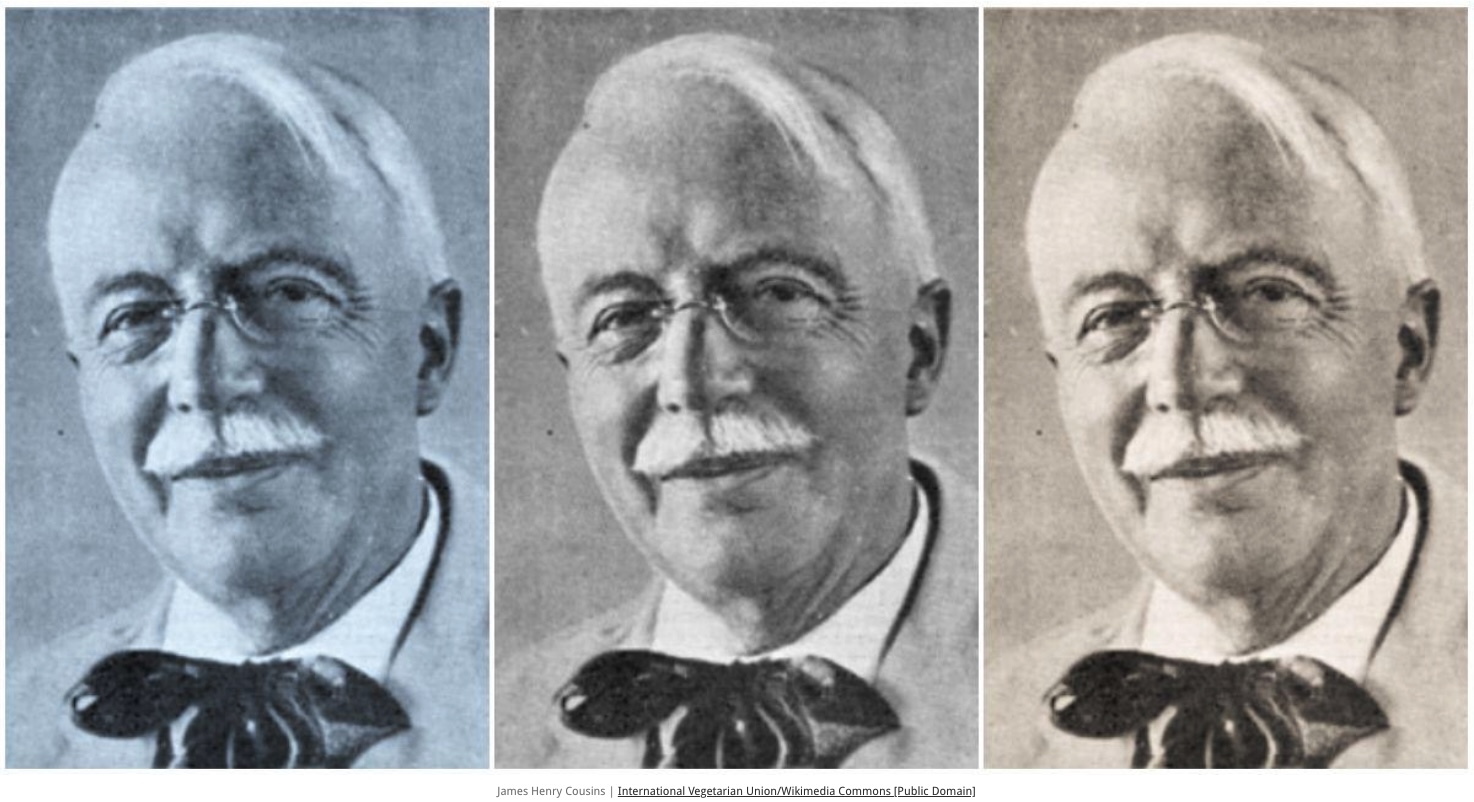INDIA, December 17, 2022 (Scroll.in): On a warm morning in Madras in November 1915, theosophist Annie Besant saw a new employee enter the office of her fledgling newspaper, New India.The 43-year-old Irishman, James Henry Cousins, had just arrived in India to work as the paper’s literary sub-editor. Born in 1873 in Belfast to a family of modest means, Cousins’ literary career included more than 100 books. Starting off at Annie Besant’s newspaper, Cousins took up jobs in different parts of India. Besant also offered him a lectureship at the Theosophical College in Madanapalle, Andhra Pradesh, of which he would go on to become the principal. “With the exception of visits to Europe and America, and a visiting professorship at Keio University, Japan (1919), Cousins remained in India for the rest of his life,” Irish academic Frances Clarke wrote in the Dictionary of Irish Biography. “He was responsible for the opening of the first public art gallery in India, at Mysore in 1924; a second was opened at Travancore in 1935, and in 1938 he began a ten-year appointment as full-time art adviser to the government of Travancore.”
It is clear from his writing that Cousins developed a profound love for India almost immediately after he moved to the country. “I had thought of her philosophical certainties as of a house of rock in which the fuss and speculation of the West would find understanding and repose,” he wrote in his 1918 book The Renaissance in India. “Instead, I came upon the spirit of the child Krishna, and the energy of the dancing Siva, and in less than six months I was up to the eyes in signs and tokens of a new life in literature, the arts, religion and national aspiration, movements that throw me back a quarter of a century in spirit, and leave me with the merest spectacular interest is gray hairs, and no shadow of the sentiment and superiority that are the rewards of middle age.”
Much more on Cousins’ cultural and educational activities in India at source.
https://scroll.in/magazine/1039652/how-an-irish-poet-and-playwright-became-a-part-of-indias-cultural-mosaic
A daily summary of world news for Hindus and non-Hindus alike

